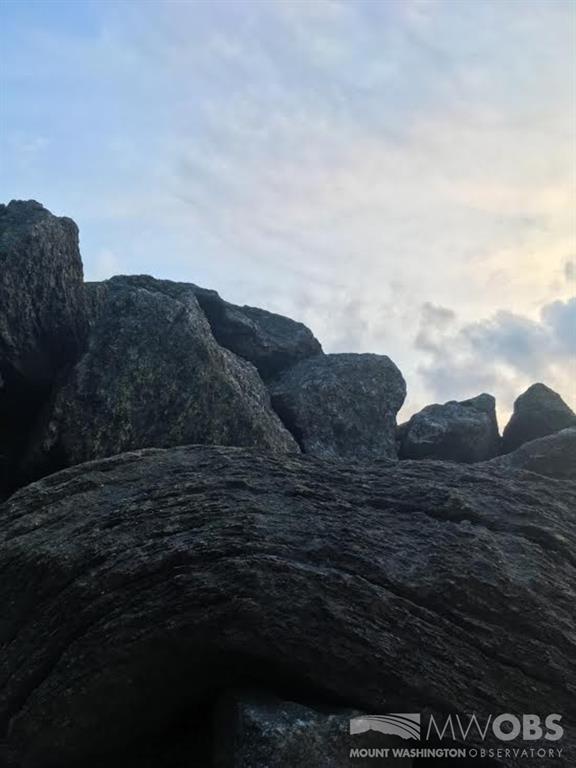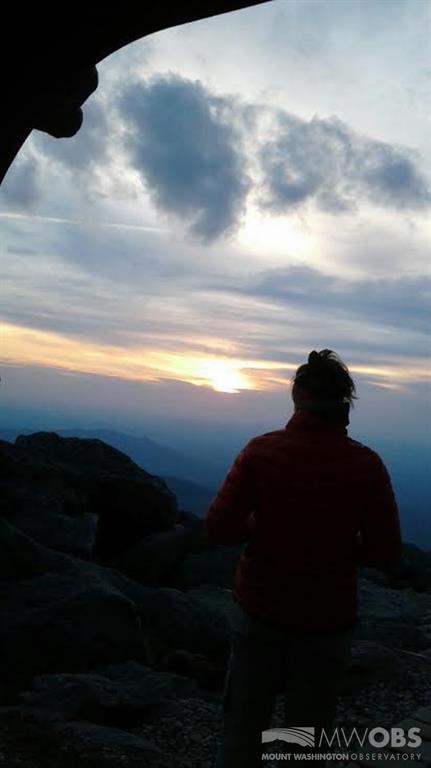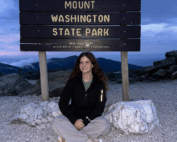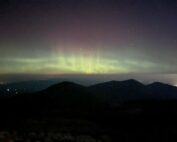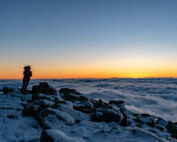Taking a Closer Look at the “Rockpile”
2017-06-13 15:46:09.000 – Elizabeth Perry, Summit Intern
Although my internship at the Observatory this summer has been entirely focused on meteorology so far, I study geology in college and often I find myself inspecting the boulder formations while working and while using the auto road to travel up and down the mountain on shift change days. I picked up a geology book from the museum shop (The Geology of New Hampshire’s White Mountains) to learn a little more about a region that is clearly very unique from a geologic standpoint. I am fascinated by the combination of volcanic, metamorphic, sedimentary and glacial processes that have shaped Mount Washington into the mountain it is today. Ironically, many of the rocks in the “granite state” are not granite! New Hampshire got its nickname from the lucrative 19th century industry when granite was obtained in quarries for building cities such as Boston. Granite formations are common in the bedrock, but the nickname can be misleading.

Driving up the auto road, one of the most easily recognizable geologic features is the complex folding in the weathered metamorphic rock known as schists, shown below. The rocks that are exposed on the summit of Mount Washington are part of the Littleton Formation, which are also visible on the higher peaks of the White Mountains. The signature folding is visible on many of the boulders around the summit in the alpine zone. Sediment from volcanic eruptions deposited on the bottom of the prehistoric ocean during the mountain-building event that formed the White Mountains, later metamorphosing and deforming under extreme pressures and forming those signature folds.
However, note that in this picture, the fold shown is concave downward, like a rainbow. This stratigraphy is upside down from the base of Pinkham Notch, for example, where the folds are “rightside up.” The explanation for this comes millions of years later, during the glacial events of the Pleistocene Epoch which formed trademark features of the Presidentials. The most recent Pleistocene glacier, known as the Laurentide ice sheet, carved some of the U shaped valleys, such as Crawford Notch, Huntington Ravine and Tuckerman Ravine. It also inverted the rocks at the summit of Mount Washington with its extreme frictional forces.

Elizabeth Perry, Summit Intern
